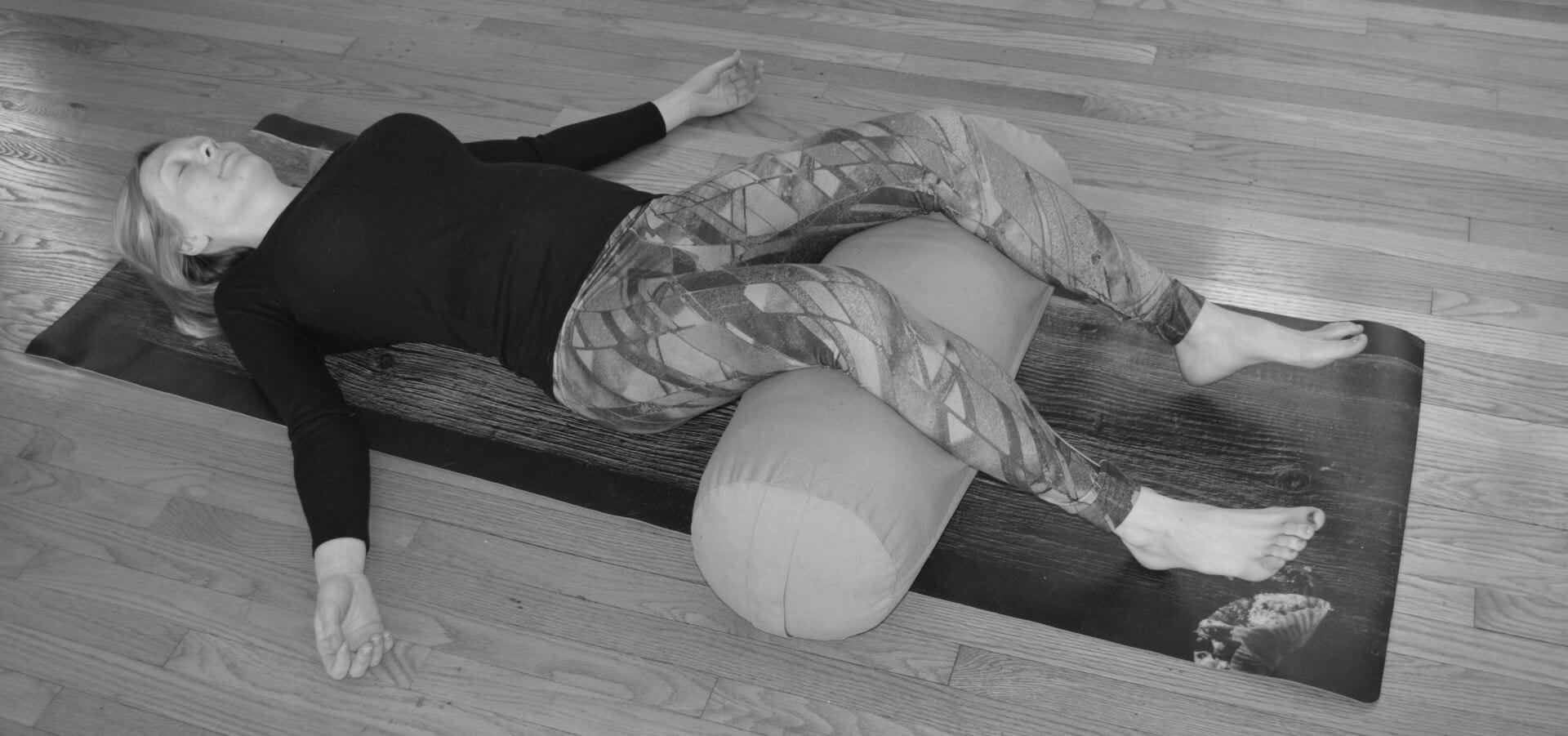I still remember my first yoga class when, at the end, my teacher asked us to lie down, close our eyes and rest for five minutes. Seriously? I remember just laying there, exhausted from class yet fidgeting. I wondered why we were wasting valuable time doing nothing. For those first, very long, five minutes, I battled my will; resisting the urge to just get up and go on with my day.
After all, I had a million things to do and there already isn’t enough time in the day.
That first shavasana (or savasana) was an eye opener for me, and as I continued to practice, eventually becoming a teacher, I realized I wasn’t the only one perplexed by the seemingly “easy pose.”
[bibblio style=”bib–row-3 bib–hover bib–white-label bib–font-arial bib–default bib–size-16 bib–shine” query_string_params=”eyJ1dG1fc291cmNlIjoiQmliYmxpbyIsInV0bV9tZWRpdW0iOiJNb2R1bGUiLCJ1dG1fY2FtcGFpZ24iOiJSZWNvbW1lbmRhdGlvbnMifQ==” recommendation_type=”optimised”]
Shavasana, which translates to “corpse pose,” offers a number of benefits to the body and to your practice. It’s more than just a reason to deeply relax, and despite what non-yogis might think when they see everyone “taking a nap” on their mat at the end of class, it’s an integral part of your practice. Here are five reasons why shavasana is the hardest working (and hardest to master) asana (posture).
Reason #1
Usually practiced at the end of class, shavasana can last anywhere from five minutes to well over 15 minutes depending on the type of class you are attending. Known for its restorative properties, shavasana gives the body a chance to relax in a neutral position ranging from lying flat on your back, to putting a bolster under the knees, or propping your back up with a bolster.
Reason #2
In this final posture, the body is able to fully integrate the benefits of your practice into the mind and body. By giving your body a chance to absorb everything you practiced, from the pranayama (breathing) to the asanas, and the meditation, you’re able to receive the full benefits of your practice. Any new neuromuscular information that our bodies created is integrated into the nervous system, ensuring that we continue to receive the benefits of our practice well into the day.
Reason #3
 Shavasana is the reward for all of our hard work on the mat. By giving our body a chance to fully surrender, we’re able to slow down and fully be in the present moment. However, as tempting as it may be to fall asleep, it’s important to stay fully conscious. Shavasana will teach you how to be at peace with the present moment instead of thinking about all those things you “have to do” once you leave class. Focus on connecting with your breath without attempting to change it, giving your body a chance to enter into a deep, meditative state of rest.
Shavasana is the reward for all of our hard work on the mat. By giving our body a chance to fully surrender, we’re able to slow down and fully be in the present moment. However, as tempting as it may be to fall asleep, it’s important to stay fully conscious. Shavasana will teach you how to be at peace with the present moment instead of thinking about all those things you “have to do” once you leave class. Focus on connecting with your breath without attempting to change it, giving your body a chance to enter into a deep, meditative state of rest.
Reason #4
As we fully surrender our bodies to the mat, allowing the earth to support every inch of us, we’re able to promote equanimity. Our fatigued muscles relax, our jaws loosen, our shoulders melt, and our eyes turn inward. It’s a quiet state of mind that gives us a chance to consciously surrender, releasing any tension that we may still hold after our bodies have been successfully stretched, twisted, tensed, and inverted. Think of shavasana as the reset button on your computer, but for your body and mind instead.
Reason #5
Finally, and most importantly, shavasana teaches us how sometimes doing nothing is even more productive than doing a million things. When we’re able to let go and just be, even for those precious five minutes, our body and mind get a much needed break. Have you ever felt that you’re even more productive after a yoga class? It’s because our bodies have been brought back to a balanced state, our thoughts have calmed, and our intentions are clearer.
As we emerge from shavasana, first in bringing back gentle movement to the body, gradually rolling over to fetal position, and eventually sitting up, we are, as the yogis say, “reborn” or “reawakened.” Shavasana helps us lighten our load, reconnect to what’s important, and if I’m being honest, gives us a chance to take a break in the hectic world we all live in.
So the next time someone asks why yogis “take a nap” at the end of class, you can share just why this seemingly easy pose is the ultimate mind/body workout.
Looking for more tips on how to stay healthy through exercise? Let Yoga at Work: The Series be your guide!
Hero (Top) Feature Image: © Nikita Buida / Adobe Stock
Additional Images Courtesy: Melissa Beveridge












